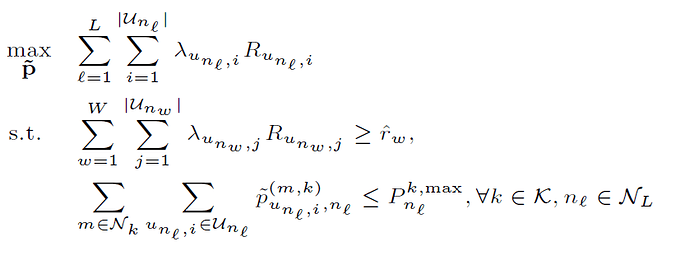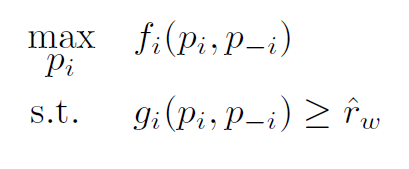Thank you so much for your comment and sorry that I am struggling and failing in defining my problem clearly.
Could you please take a look at the above optimization problem one more time? I don’t think that SINR and sinr are the linear- fractional functions. In the above optimization problem the variable of interest is ptilda. As I have mentioned, the cvx should be used inside nested loops.
So the variable of interest for each cvx inside the nested loops over (k,m,l,i) is ptilda(k,m,l,i) which is a scalar. So, SINR is an affine function of ptilda(k,m,l,i) and sinr is a convex in the CVX variable ptilda(k,m,l,i) . I took the second derivative w.r.t. ptilda(k,m,l,i) and it is >= 0.
So the objective function is convex and by rewriting the constraint as log(convex) = - log(concave function), the constraint is convex and acceptable for cvx. right?
Now, when I run the code I got the error of “Cannot perform the operation: {real affine} ./ {real affine}” in the definition of SINR while it is affine in variable ptilda(k,m,l,i).
I guess the problem comes from defining the cvx variable. I don’t know how to tell cvx that the variable of interest is ptilda(k,m,l,i) while the rest of ptildas are given. in other words, we are going to optimize all of them at the same time. Does it make sense now?
Thanks again for your time



